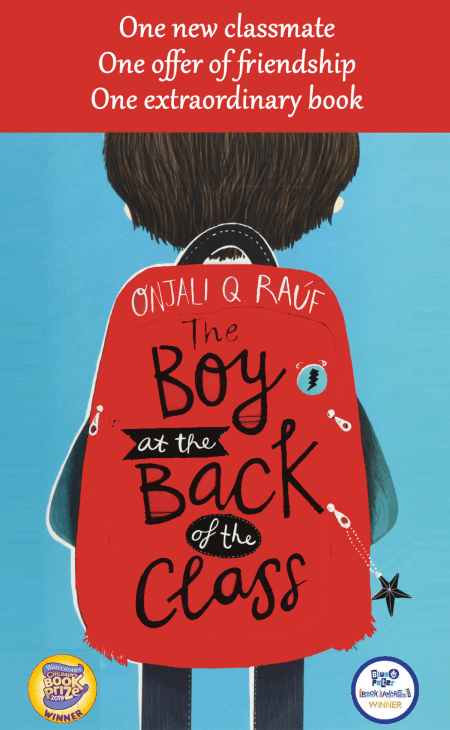This article was written by Helen Swinyard and commissioned by Tottenham Community Press and first published in its June 2019 issue. Tottenham Community Press is published by Social Spider CIC and is a sister paper to Enfield Dispatch.
It is Refugee Week from 17-23 June, and there are seven 'simple acts' to raise awareness of the refugee experience. One of them is to 'share a story' in order to learn more about the point of view of refugees themselves. Helen Swinyard shares The Boy at the Back of the Class.
 The Boy at the Back of the Class by Onjali Q. Raúf (and illustrated by Pippa Curnick) only came out in July 2018 but is already collecting accolades and prizes. It's won the Blue Peter Book Awards 2019 (Best Story category), the Waterstones Children's Book Prize 2019 and has been shortlisted for both the Branford Boase Award 2019 and the Jhalak Prize 2019.
The Boy at the Back of the Class by Onjali Q. Raúf (and illustrated by Pippa Curnick) only came out in July 2018 but is already collecting accolades and prizes. It's won the Blue Peter Book Awards 2019 (Best Story category), the Waterstones Children's Book Prize 2019 and has been shortlisted for both the Branford Boase Award 2019 and the Jhalak Prize 2019.
The Boy at the Back of the Class is told from the perspective of a child narrator - whose name and gender is revealed at the end of the story.
The narrator guides the reader along, as a new boy arrives in their class at school.
As the story unravels, the narrator makes friends with the newboy, Ahmet, and we (and they) find out more and more about Ahmet's life and story. The Boy at the Back of the Class is drawn from Raúf's experiences of working with the refugee community in Calais, and Ahmet's story came to her whilst she was stuck in hospital recuperating from an operation. Although the book is marketed at an 8-12 year old audience(as the narrator is 9 years old), the story is pitched perfectly for a wider readership, touching compassionately on the horrors Ahmet has faced before seeking refuge in the UK.
The Boy at the Back of the Class includes details of our contemporary UK attitudes to refugees, told through adult conversations the children hear on the bus or at the school gate: some are welcoming and some prejudicial.
The second half of the story changes from a school/friendship drama, to more of an adventure, as the children try to help Ahmet reunite with his family.
This is not a one-dimensional story for learning about refugees and their experiences. The authentic voice of the narrator has warmth and humour but also a childish innocence about certain situations - not yet having understanding of the world.
The narrator has also known hardships - their mum working two jobs since their father died. They are fantastic at asking questions and including us in the story through them. Their family dynamic is wonderful and all the characters - even minor ones, seem well-rounded and interesting.
Readers of any age can relate to the details embedded within this story.



 The Boy at the Back of the Class by Onjali Q. Raúf (and illustrated by Pippa Curnick) only came out in July 2018 but is already collecting accolades and prizes. It's won the Blue Peter Book Awards 2019 (Best Story category), the Waterstones Children's Book Prize 2019 and has been shortlisted for both the Branford Boase Award 2019 and the Jhalak Prize 2019.
The Boy at the Back of the Class by Onjali Q. Raúf (and illustrated by Pippa Curnick) only came out in July 2018 but is already collecting accolades and prizes. It's won the Blue Peter Book Awards 2019 (Best Story category), the Waterstones Children's Book Prize 2019 and has been shortlisted for both the Branford Boase Award 2019 and the Jhalak Prize 2019.